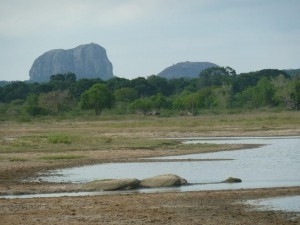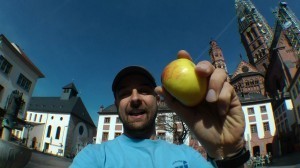Lisa Niver's Blog: We Said Go Travel, page 419
February 18, 2014
An outing in Sri Lanka
Dawn in a rural corner of Galle and the light is soft and milky, the air cool. Across the road, Langur monkeys scrabble through trees. On the lane a solitary cow grazes on the verge. A man wanders into view pulling an empty cart and disappears again. A cyclist wobbles round the corner before dipping behind the hedgerow. This world is oddly silent despite the activity.
Back inside the house muted Buddhist chants fill the air as the television screen shows Lord Buddha from every angle. Madam Kahandagamage hands a china cup of sweetened tea to the driver.
It’s the quiet before the onslaught.
My newly adopted Sri Lankan family pile into the hired van: Vi, her family, her best friend and sister, their distant cousin … and myself, the stray European. We’re going to Yala National Park.
We stop for breakfast, Sri Lankan style, by the Indian Ocean: spicy chickpeas, curry and egg and onion toasties. Further on at the temple, Mr Kahandagamage offers up prayers for a safe journey. We light oil and incense sticks, palms placed together, heads bowed.
It’s mid-afternoon by the time we reach Yala. We’ve been waylaid by temples, coastal blowholes, opportunities for toe-dipping, and beach-combing for miniature crabs, corals and shells. There’s also the distraction of food: skeletal dried fish; rambutan and figs; watery ice-creams and takeaway noodles.
At Yala, I hope to see leopard. We spy boar and buffalo, jungle fowl and wild peacock, even a family of elephants, but the leopard remains elusive.
Sometimes the magic is not where you expect it to be. Driving out of the park again, the light is fading out. A youngster herds cattle from his motorbike, farmhands drift past us huddled on tractor trailers. The street lights dance like fireflies on Lunugarnvehera reservoir. Above it the pale sky swirls a signature.
“I wish I could write in the sky,” Dimuthu says as we gaze upwards.
Driving on through the night, we pass open-fronted shops of garish souvenirs. We stop by one, weaving through tomato-red lions and fluorescent-orange dogs, ducking jelly-green bats, nets of balls and cascading plastic dolls.
Incongruously the counter is laden with great blocks of dodol, a toffee-like delicacy made of coconut milk and rice flour: sticky, thick and sweet. We pounce on the samples, trying every variety offered. “We could make our way down the street sampling dodol from each shop without having to buy any,” Vi giggles.
Leaving the shop, Yasas, the distant cousin and our travelling clown, picks up a revolver and presses it to his skull. His head falls, eyes roll and tongue lolls. “Cheer up, Yasas,” I say. “We mightn’t have seen any leopards, but I’ve got a kilo of dodol for the journey home.” Yasas resurrects and grins.
Homeward bound, I dip in and out of sleep in the darkened van. I see prowling leopards and roaring seas, shadowy roads and the flash of street lamps; bald-headed dolls and the light spinning across the faces of my new Sri Lankan family. It’s been a grand day out.
About the Author: Helen Moat spent her childhood squished between siblings in her Dad’s Morris Minor, travelling the length and breadth of Ireland. She’s still wandering. Helen was runner-up in 2011 British Guild of Travel Writers Competition and was highly commended in the BBC Wildlife Travel Writing Competition in 2013.
Thank you for reading and commenting. Please enter our next Travel Writing competition and tell your story.
The post An outing in Sri Lanka appeared first on We Said Go Travel.
Udaipur, India: Invoking Your Presence in Nature
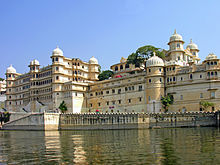 Set amidst the lofty Aravalli Range of Rajasthan, the beautiful city of Udaipur is an abode of picturesque lakes, lush-green gardens, majestic forts and palaces, awe-inspiring museums, and revered temples. Receiving thousands of footfalls the year round from all over the world, Udaipur is certainly one of the most sought-after destinations. While on one hand, the city boasts of its rich cultural heritage, on the other, it is known for the romantic experience it provides, which rightly earns it the crown of being “Venice of the East.” Udaipur is a must-visit place, and one of my favourites, as every time I go, I fall in love with its magnificence all over again.
Set amidst the lofty Aravalli Range of Rajasthan, the beautiful city of Udaipur is an abode of picturesque lakes, lush-green gardens, majestic forts and palaces, awe-inspiring museums, and revered temples. Receiving thousands of footfalls the year round from all over the world, Udaipur is certainly one of the most sought-after destinations. While on one hand, the city boasts of its rich cultural heritage, on the other, it is known for the romantic experience it provides, which rightly earns it the crown of being “Venice of the East.” Udaipur is a must-visit place, and one of my favourites, as every time I go, I fall in love with its magnificence all over again.
This city of lakes would never fail to captivate you with its beauty and splendor. Situated in the heart of the city, Pichola Lake is one of the largest and the most ancient lakes. Its mesmerizing beauty and scintillating waters make it the spotlight of the city. Located on its banks is the architectural spectacle of City Palace, which is a perfect blend of European, Medieval and Chinese Architecture. It’s not until you visit the place that you get a glimpse of its wonder – its corridors, courtyards, terraces, hanging gardens, towers, arches and domes. Eleven palaces altogether comprise the wonderful City Palace, which has been built exclusively in marble and granite.
Another major attraction, which is also the favorite destination for couples, is the most beautiful and tranquil Fateh Sagar Lake. Whenever I go there, I feel like spending my entire day in the calm aura of the place, enjoying a boat cruise in emerald waters and watching the sunset before my eyes. At the same time, a short speed-boat experience is an adventure not worth missing!
A blissful time at this wonderful city would make you forget all your stress and worries. The serene green gardens would best soothe your senses, mind and soul as they get enthralled by the world of nature. “Saheliyon ki Badi” or the “Garden of the Maidens,” with a beautiful tree-line entrance, is a welcoming break from the outside hustle and bustle. The flowers smile, and waters of the fountains dance to welcome the tourists. You must also not miss to visit “Gulab Bagh” or the “Garden of Roses,” which is so spectacularly spacious, well-maintained and well-planned that you feel as if you have come into an altogether different space. Besides, it also houses a museum and library to enrich your curious minds. The garden is actually a Botanical and Zoological garden where dwell different species of flora and fauna, and there’s even a toy train to take you for a tour of the garden. Children are best attracted to the majestic turn-around of “Sukhadia Circle,” with a splendid three-tiered fountain. When illuminated at night, it provides a feast to the eyes.
There are numerous temples in Udaipur like Jag Mandir, Jagdish Temple, Srinath ji Temple and Bohra Ganesh Temple, and a visit to each of these brings to you spiritual ecstasy. Whenever I travel to Udaipur, I never miss to visit the temple on heights – Karni Mata Temple. An early morning trek to the temple is truly enjoyable. There’s now even a ropeway that takes you there, providing an aerial glimpse of the magnificence of Udaipur. From high up above, you get to experience the magic of the white city, and from there you realize that there’s a lot – still left to be seen.
There is, indeed, so much more in store, like “Bhatia Lok Kala Mandal,” a museum engaged in popularizing folk art, music, dance and culture. You must not miss to watch the puppet show, which will never fail to leave you awestruck. In fact, this holds true for the entire city of Udaipur, which proves it to be the perfect place for leisure and pleasure of tourists. An amazing amalgam of the natural and the man-made – with forts, palaces and temples blending into the green gardens and blue waters, the city becomes an epitome of perfect bliss for those in quest of fragrance and color.
About the Author: Sandeep Sinha has traveled 17 countries in Asia, Europe, and North America. He loves writing and poetry. Sandeep likes to try food from various cultures and loves every kind of food that is made with love and served with love.
Thank you for reading and commenting. Please enter our next Travel Writing competition and tell your story.
The post Udaipur, India: Invoking Your Presence in Nature appeared first on We Said Go Travel.
Inspired by over 500 writers!
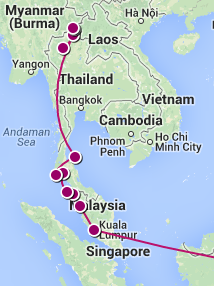 From our Latest News: Inspired by OVER 500 Writers!
From our Latest News: Inspired by OVER 500 Writers!
Ever wonder how big is the World Wide Web? According to Internet Live Stats there are 844, 075, 445 websites and the number is going up every second! We are fast approaching ONE BILLION websites online.
At WeSaidGoTravel, we are proud that Global Alexa ranks us in the top 70,000 of the millions on line! We have been re-ranked in the Top 100 Travel blogs and have moved up again to #69. We thank you for your support in helping our site grow.
Our first Inspiration Travel Writing Contest had sixty participants in February 2013. And our fourth Travel Writing Contest ended on February 14, 2014 with over a 700% increase with 505 people from 55 countries. In our four contests, we have had 1043 people from 74 countries participate!
Thanks so much for being part of the sharing of stories from every continent! We may have a travel video contest next month and in May we will start another writing contest on the theme of Independence. Please read our inspiring entries, as we will be publishing more each day! Winners will be announced in April after all the entries are live on the site.
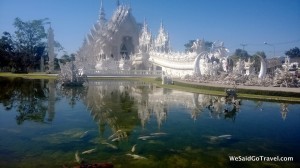 View our latest video from Le Meridien Chiang Mai. More soon from the Mantrini in Chiang Rai. Thank you to AsiaRooms.com!
View our latest video from Le Meridien Chiang Mai. More soon from the Mantrini in Chiang Rai. Thank you to AsiaRooms.com!
Recent Articles: We Said Go Travel in “Eight Travel Stories That Will Rekindle your Romance for Life,” George on Johnny Jet about the Armenian St Heritage Hotel in Penang, Malaysia and Lisa in the Huffington Post about the new book by UCLA doctors called Love Me Slender and together on the Jewish Journal about our event in Hawaii.
We appreciate all of you who read our newsletters, articles, website and BOOK! Thank you to everyone for your support of our journey and all our writing. Connect with us on Facebook, Google+, Instagram, LinkedIn, Pinterest, SlideShare, Twitter, and YouTube.
Lisa and George (Click here to sign up for this newsletter. )
Traveling in Sin: News from this Memoir’s First week! from Lisa Niver Rajna
The post Inspired by over 500 writers! appeared first on We Said Go Travel.
Finding Inspiration in Mexico
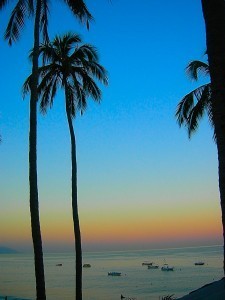 I wiggle my toes further into the sand, enjoying the coolness on my sun-burnt feet. Leaning back on my elbows, I butt-dance the sand into a more comfortable shape, feeling the sun caress my face in the early morning light. The beach, nearly empty of tourists, has only a few, lone souls appreciating the solitude. Beach vendors and hotel staff are, however, in abundance, scurrying like worker ants to get chairs and tables and umbrellas in place for the busy day ahead.
I wiggle my toes further into the sand, enjoying the coolness on my sun-burnt feet. Leaning back on my elbows, I butt-dance the sand into a more comfortable shape, feeling the sun caress my face in the early morning light. The beach, nearly empty of tourists, has only a few, lone souls appreciating the solitude. Beach vendors and hotel staff are, however, in abundance, scurrying like worker ants to get chairs and tables and umbrellas in place for the busy day ahead.
Fisherman pull in their nets, full of the days catch. Street dogs play in the surf, and palm trees sway in the light breeze, occasionally filtering the sunlight flitting across my shadow. The waves break near shore, creating that familiar shushing sound that forever soothes my soul to the deepest core of my being. The sun rises, heating up the sand, promising a scorching day ahead.
The click-clacking of dishware being set out begins to fill the silence, but I block it out and concentrate all of my attention on a single figure shuffling down the beach. Dressed in traditional beach vendor white, tattered sandals on her wrinkled feet, her hunched figure highlighted by a brilliantly multi-colored shawl thrown across one shoulder. A near-legendary figure in Puerto Vallarta, the muffin lady has been plying her delicious wares on travelers for as long as I have been visiting this special place.
Somewhat shyly, she approaches me with her freshly baked muffins and utters “desea un muffin?” “Tienes pina?” I respond. The smile lighting her face tells me that today, I am in luck, and she has pineapple, my very favorite. I buy two, and begin to eat one slowly, savoring the incredibly moist, intensely fruity goodness. I lick each finger clean to guarantee not a crumb is wasted, by now in such a food haze I am barely aware of the beach coming alive around me.
The beach, THIS beach, touches a part of my soul that I was not even aware existed while growing up in small-town Minnesota. Perhaps the search for this peace is what draws me to travel, what creates a restless yearning in my heart. Puerto Vallarta has had an intoxicating pull on me since my first trip, over 20 years ago. I am drawn back again and again to recharge and regain balance.
How do you determine a place that becomes your very individual brand of peace? Is it a place that causes you to dream a bigger dream than you normally would? A place where you feel at home from the very first visit? Maybe it’s simply the universe letting you know where you belong.
The morning buzz of activity increases and I reluctantly rise, dusting sand and muffin crumbs off as I do. Time is ticking and I have just enough time to stop for a morning coffee, before returning to my room. But, first, I enjoy one last, lingering gaze at the water.
I wish I could have stayed in that moment forever. One of these days…. I will.
About the Author: Rhonda Delameter has traveled to over forty countries on five continents and has always found inspiration for travel in her writing. For her next BIG adventure she, her husband, and their two dogs are going to drive the PanAm Highway to Patagonia!
Thank you for reading and commenting. Please enter our next Travel Writing competition and tell your story.
The post Finding Inspiration in Mexico appeared first on We Said Go Travel.
February 17, 2014
Trains in Japan: The Good, the Bad, and the Useful
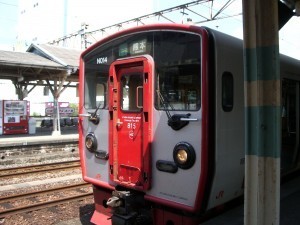 In Japan, I learned appreciation for the train. The train and I spent hours together: it was the fastest and most efficient way to get to around (without a car, it was my only way). For me, and millions of Japanese people, the train wasn’t just the transportation of choice: it was a way of life.
In Japan, I learned appreciation for the train. The train and I spent hours together: it was the fastest and most efficient way to get to around (without a car, it was my only way). For me, and millions of Japanese people, the train wasn’t just the transportation of choice: it was a way of life.
When I first arrived in Japan, I loved taking the train: everything was new and exciting. I gazed out the window during my hour-long daily commute as scenery passed by: flooded rice fields, tile-roofed homes, stone Buddha statues, and red torii gates. There were equally interesting sights on the train: nautically inspired school uniforms, business suits in the heat of summer, colourful fashion choices, and cellphone charms of varying shapes and sizes (some bigger than the phone they dangled from).
But after weeks of commuting, train travel changed from a journey of discovery into a chore. No longer was the businessman falling asleep on my shoulder charming, no longer was the group of students squishing me onto the train exciting. Wily senior citizens consistently thwarted my attempts to get a seat, and I grudgingly resigned myself to standing. I now dreaded taking the train, and when I wasn’t thinking about how much the train annoyed me, I was talking about it. I complained a lot: the train was too crowded, too slow, too noisy, and too boring. These bad feelings were making a significant part of my day detestable.
I needed to change taking the train from something I loathed to something I could at least tolerate. If millions of Japanese people could take the train every day without losing their minds, then so could I. With that in mind, I decided to look to my fellow passengers for inspiration. When I started to pay attention, I saw that Japanese people filled their time on the train with all kinds of things.
Students studied from textbooks and worked on assignments; business people flipped through binders, and highlighted notes; some passengers listened to headphones, and others read a newspaper or book. Japanese people on the train weren’t talking on their cellphones like I was used to in North America. They were texting, playing games, or watching videos, heads bent over, phone charms swaying as the train started and stopped. Napping was a popular train activity; somehow, passengers who were asleep for the entire ride opened their eyes just in time to stand up and exit the train.
Now my eyes were opened too: I had discovered the strategies of Japanese train-riders! And, although I wasn’t convinced I had the secret sense that would successfully wake me up at my stop, I was convinced I could enjoy my time on the train. At the very least, I could make it worthwhile.
I was determined: no longer would my time be lost to the void, it would be used for something. When I brought my Japanese textbook, my studying advanced; when I brought a novel to read or music to listen to, I could ignore my lack of personal space; when I planned my work for the next day, I could relax when I got home. I had changed my time on the train from insufferable to productive, sometimes even enjoyable.
In Japan I spent a lot of time on the train, and it went from exciting, to onerous, to useful. The train didn’t just take my ticket, it took my time too. That time belonged to me and what I learned in Japan was that there was a way to enjoy it. How did I find a way? It was riding the train of course, right beside me.
About the Author: Heather loves traveling, cooking, and scuba diving. She currently works as an engineer and writes when she can find spare time between playing soccer, doing yoga, judging poetry slams, and P90X.
Thank you for reading and commenting. Please enter our next Travel Writing competition and tell your story.
The post Trains in Japan: The Good, the Bad, and the Useful appeared first on We Said Go Travel.
Sabah, Malaysia “Land Below The Wind”
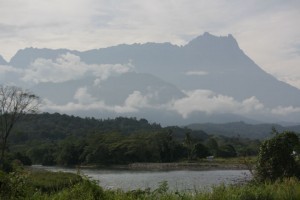 SABAH “LAND BELOW THE WIND”
SABAH “LAND BELOW THE WIND”
Sabah also nicknamed “Land Below The Wind” is one of the four Territories on Borneo, the third largest island in the world. The others are Sarawak, Brunei and Kalimantan Indonesia. Sabah is home of around 2 million people of over 30 different ethnic groups, speaking 80 different dialect. She is unique amongst them all because she has the tallest peak in South East Asia, has the Northernmost tip on the Island of Borneo, and have one of the best underwater dive hotspots as mentioned by famous voyager Jacque Costeau. As a tourist attraction Sabah is gifted with all the adventure tourist are looking for.
THE MOUNTAINS
Mount Kinabalu standing at 4,095 m (13,435 feet) above sea level is not only for recreational climbing but also home of the Annual International Kinabalu Climbathon besides having the worlds highest via Ferrata starting at the height of 3,400 m and ends at 3,800 m . It has been said that anyone who arrives in Sabah actually does not reach Sabah if he/she did not climb Mount Kinabalu (well, or at least go to the National Park at its foot).
Visiting Sabah is as good as back to nature within civilization. It has the growing city of Kota Kinabalu (formerly Jesselton) and the Lost World if Sabah in Maliau Basin. Sabah is in fact a one stop tourism spot for any leisure and adventure seekers, from climbing the highest peak in South East Asia to diving in one of the best diving spots in the world next to the world’s deepest trench, the Marianna Trench.
Simpang Mengayau in Kudat is the northernmost tip of Borneo. It is the point where two seas meet namely the South China Sea and the Sulu Sea. Visitors can make a day trip and spend the night in the town of Kudat, spend the night at Rungus Longhouse or travel back to Kota Kinabalu. Along the trip you can visit Kg Sumangkap (Gong making cottage industry) and/or Kampung Gombizau (the honey Bee Village)
If your trip is on a Sunday, make a stop at Kota Belud for its Tamu, the most popular local Sunday market in Sabah and if you are lucky able to see and meet the “Cowboy of the East” donning spectacular costumes and impressive displays of riding skills.
WHITE WATER RAFTING
If you want to tame the wild Padas River (Grade III-IV) opt for white water rafting. Travel down south to the Pedalaman District to get yourself wet on the rough waters and rapids to raise your adrenalin, riding waves as high as six feet and thrilling rapids up to Grade IV down Sungai Padas. You can either go by road or experience the only railway service on Borneo Island, The Borneo Railway, to Tenom town.
Kiulu River rafting Grade I and II river and offer a safer challenge suitable for children and less adventurous adults.
WILDLIFE ZONE OF SABAH
Sandakan the Wildlife Zone of Sabah on the north East of Sabah has to visit the Orang Utan sanctuary, Turtle Island or the lower Kinabatangan wetland of Sukau to observe the proboscis monkey and its wildlife. Besides Sukau, Sabah also has another Mangrove wetland in Klias to watch firefly and proboscis monkeys.
BACK TO NATURE
Sabah also has abundance of nature sutes at Maliau Basin in Tawau District, nicknamed the Lost World of Sabah. She also keep Danum Valley as a rainforest conservation centre and Tabin wildlife reserves with its richest wildlife concentration. Birdnest lovers can walk into the Gomantung Caves, a limestone cave and bird nest collection centre.
Another nature’s product of Sabah is her worlds largest flower, the Rafflesia, and blooms at certain time of the year makes it unique to be present during such times.
ISLANDS AND DIVE RESORTS
Marine Parks is another attractions presented to divers . Island hopping around Kota Kinabalu ia an attraction for those leisure water lovers.
Dive and admire the corals on the islands off the coast of Tawau, Semporna and Sandakan. They house among the most beautiful underwater ecosystem of flora and fauna.
CULTURE
Having 30 different ethnic groups, Sabah has the most varied culture that belong to each of them but however do not miss to try out the most popular among them the Kadazan’s Sumazau dance or the Tagunggak, the bamboo dance. Visit Sabah during the early month of May each year and the cultures of Sabah bloom because that is the month when the state celebrates her annual Harvest Festival.
ACCOMODATION
Don’t worry about accommodation because there is abundance of different types of accommodation ranging from 5 star hotels to longhouse homestays that suit your pocket.
So, why Sabah? ………because every districts has its own attraction like wildlife, clear gushing waterfalls, interesting jungle produce, native festivals or historical sites.
About the Author: Zahari Baharum
A full time blogger writing about lifestyle, travel and sports. I am also a social media influence with profiles on most popular social media sites.
Thank you for reading and commenting. Please enter our next Travel Writing competition and tell your story.
The post Sabah, Malaysia “Land Below The Wind” appeared first on We Said Go Travel.
Bartering with a Billionaire in Singapore
Michael Wigge redefines the term “adventure travel.” For some, adventure comes in the form of scaling mountains and bungee jumping. For Wigge, the adventure lies in engaging with strangers, couch surfing, getting from one country to the next with no money and even crossing Germany….on a Razor scooter.
After travelling the world for 150 days without money while writing his first book, How to Travel the World for Free, Wigge took on a new challenge: turn an apple into a house in Hawaii.
For his latest book, How to Barter for Paradise, Wigge traveled through 14 countries and 6 continents exchanging goods for more valuable ones, meeting an array of good-humored people along the way who took his deals.
Singapore
After sixty-five days of bartering, I sit with my jade on a plane, and I’m just in time. Jim Rogers, the billionaire in Singapore, promised me weeks ago to devote thirty minutes of his precious time to me on May 25th at exactly 11:10 a.m., just as long as I bring some jade with me. And I have it!
I call up the most important facts about Jim again:
He retired from finance at the age of thirty-seven, since he has made enough money in the stock market.
He moved from New York to Singapore as an adventurer and investor.
He is married to a young blonde.
He has made two big world-wide trips, one on a motorcycle, and in the process set a world record: over one hundred countries visited in three years!
Now I understand why I was granted an audience. Jim likes adventures. He has also written books about them with telling titles such as Investment Biker and Adventure Capitalist. I’m very excited for my appointment as I prepare myself. A meeting with a billionaire is the chance to really make a big jump. So I have devised the following plan: first, I’ll offer only the two small jade pieces, and then I’ll throw in the big stone, and then, when I’ve already gotten a decent offer, BAM! The little jade Hawaii house is also on the table. And then, when that has added a nice amount to his offer, Jim Rogers will turn the house over and, ding! the inscription “for Jim” on the bottom, which I wisely made in advance. Who could refuse an offer like that?
It is May 25, exactly 11:10 a.m., when I ring the bell to Jim’s house, or should I say his estate, in Singapore. A maid leads me to a conference room decorated with Asian art objects. I wait ten minutes until an older but athletic man of just 5’4” enters the room, says hello, and gets right to the point: “Did you bring jade?”
“Yes!”
“Let’s see it.”
“Here, two beautiful jade art pieces.”
“It doesn’t really look like good jade.”
“No, here are the certificates.”
“They aren’t real!”
Unbelievable! I was so sure that a totally euphoric bartering agreement would happen here, interrupted only by the clinking of champagne flutes and the entrance of attractive maids who would discreetly shove caviar hors d’oeuvres into my mouth.
And then this: a brutal business deal where I have to be extremely careful not to leave the house empty-handed. I realize that Jim will disparage anything I offer to strengthen his own position. But luckily, the image of the woman in the Dharavi slum of Mumbai appears before my eyes again. She whispers in my ear: “When bartering, always act as like you are completely dissatisfied!”
I immediately have the opportunity to put those words into action. Jim offers me two gold coins, an ounce each. When you think about the fact that an ounce of gold is worth about $1,500, that’s not bad. But still, I listen to the words of the woman from the slum and act dissatisfied. At the same time, I set the six-and-a-half-pound jade stone—bam!—on the crystal table like magic. Jim looks at the jade with big eyes. He hadn’t counted on there being more. Now the shell of the stony businessman is beginning to crumble, I think, as he says, “What is that?”
“Six and a half pounds of jade.”
“It doesn’t look like good jade.”
“No, here’s the certificate.”
“Come on, it’ll cost me $10,000 to get it cut.”
I almost have a small crisis, but luckily Jim disappears wordlessly into his gold and silver cabinet and places a third ounce of gold on the table. Wow! That’s almost $5,000 in gold, and I’ll definitely be able to trade it, since gold has value all over the world, which makes it much better than jade. And the best thing is that I still have my trump card. The moment comes—ding!—I place the little house wordlessly on the table at the same moment Jim looks at the door politely but impatiently. My thirty-minute time with the billionaire is over.
“And what is that now?”
“A jade Hawaiian house that I made myself, for you.”
I don’t say anything, I don’t show a certificate, I just calmly turn the house over. Then I say, in my most charming voice, “I made it especially for you. It has an inscription, here: for Jim.”
“An inscription? For me? That’s . . .”
Both of us feel tears in our eyes. For a moment, emotions win over the tough business atmosphere. Jim disappears into his cabinet again. It takes a moment, but he returns with three ounces of silver, which he puts in my hand with a smile, but without wasting words. He quickly sees me to the door, probably so as not to risk me seeing him wipe the tears. Or maybe just so that I can’t magically proffer another piece of jade out of my pocket.
Wow, I made a good deal and now I’m sitting with three ounces of gold and three ounces of silver in a hostel room in hot, humid Singapore, right on the equator. This city state is distinguished by its imposing skyline and its atmosphere of order and cleanliness that beats out Germany in every way. It’s a great city, but with unusually strict laws. A taxi driver tells me that the slightest infringement is punished immediately with jail time. I wonder if I’m allowed to walk around Singapore with six ounces of gold and silver in my pocket. I hastily look for my next country and decide on Thailand.
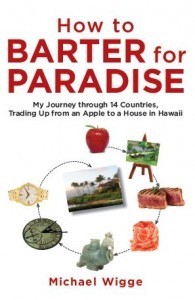 About the Author: Michael Wigge redefines the term “adventure travel.” For some, adventure comes in the form of scaling mountains and bungee jumping. For Wigge, the adventure lies in engaging with strangers, couch surfing, getting from one country to the next with no money and even crossing Germany….on a Razor scooter. After travelling the world for 150 days without money while writing his first book, How to Travel the World for Free, Wigge took on a new challenge: turn an apple into a house in Hawaii.
About the Author: Michael Wigge redefines the term “adventure travel.” For some, adventure comes in the form of scaling mountains and bungee jumping. For Wigge, the adventure lies in engaging with strangers, couch surfing, getting from one country to the next with no money and even crossing Germany….on a Razor scooter. After travelling the world for 150 days without money while writing his first book, How to Travel the World for Free, Wigge took on a new challenge: turn an apple into a house in Hawaii.
For his latest book, How to Barter for Paradise, Wigge traveled through 14 countries and 6 continents exchanging goods for more valuable ones, meeting an array of good-humored people along the way who took his deals.
The post Bartering with a Billionaire in Singapore appeared first on We Said Go Travel.
The Heart of London, UK
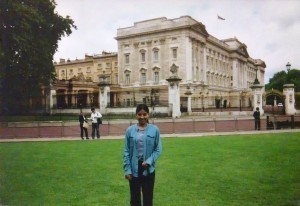 I will always be grateful to my grandmother for taking me to a place that once I laid eyes on; I knew I would never forget. Ever since I was ten I longed to visit London. Three years later I got my wish and found myself on a seven hour plane ride heading towards discovery and inspiration. Most importantly, I was closing in on a part of my heart that I never knew existed.
I will always be grateful to my grandmother for taking me to a place that once I laid eyes on; I knew I would never forget. Ever since I was ten I longed to visit London. Three years later I got my wish and found myself on a seven hour plane ride heading towards discovery and inspiration. Most importantly, I was closing in on a part of my heart that I never knew existed.
Upon landing, it seemed as though my eyes were being pulled in every direction. Large regal statues, double deck buses, grand bridges, monumental buildings, and towers all surrounded me! Riding on top of a double decker bus was exciting; it was as though I was driving in the air. I first familiarized myself with a very busy square known as Piccadilly Circus. I felt alive and thrived on this energetic part of London. The several statues and fountains it presented also gave this square a sense of closeness, as if it were a place of gathering among friends.
I discovered an immeasurable amount of history and importance all throughout London. Something I had never felt so strongly before in any of my other travels. It spoke to me, like a hidden passion now ever so present in my mind. For example, when we reached the Tower of London it struck me as a royal settlement. Though it held the crown and embellishments of the king and queen I learned that it was also a prison which had performed torturous methods. In my young mind, London was just a magical place, the violent history of the Tower made me realize that there was a story within every building and landmark.
Statues of horses and men were a common sight, and the London eye; one of the largest Ferris wheels in the world towered over the lake. Nearby were the Houses of Parliament and the Elizabeth Tower; also known as Big Ben. The Houses of Parliament posed as a meeting ground for the House of Commons and Lords. To me it was a symbol of strength and endurance seeing as it had been demolished in the past due to a fire, and then reconstructed. The Elizabeth Tower was a new design added during this time, which I believe enhanced, the already striking feature of the Houses of Parliament.
Perhaps the most awe inspiring place I discovered in London was Buckingham Palace. Starting as a townhouse and becoming the official palace of the royal monarch, Buckingham Palace carries a diversity that amazed me. There was a time when only invited guests were allowed inside these majestic halls. Even though I did not get a chance to enter Buckingham Palace, there was no question on how important this place was. A large statue known as the Victoria Memorial stands in front of the main gates. The men standing guard outside in military uniforms clearly showed how over the years the Palace has maintained a high presence of power.
I wished I could have longer enjoyed and learned about the city of London. It has lived through many downfalls and triumphs over the years, capturing the interest of many visitors including myself. There is an air of mystery hovering over the city, and I truly felt like I was meant to be a part of it. The heart of London is not plainly visible to citizens or tourists. It is discovered.
About the Author: Traveling is a joy like no other for Lizette Garrido . Having been born in New York and now living in Arizona, I long to voyage to different far away lands. Even though it’s been 11 years, I dearly wish to return back to London and explore the entire city.
Thank you for reading and commenting. Please enter our next Travel Writing competition and tell your story.
The post The Heart of London, UK appeared first on We Said Go Travel.
February 16, 2014
Petermann Island, Antarctica: Eden on Earth
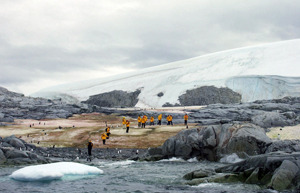 My first trip to Antarctica was aboard M/V Akademik Shokalskiy, the same Shokalskiy that was beset in ice for a month in December 2013. My voyage occurred a few years earlier. Twenty-eight passengers sailed from Ushuaia, Argentina to the Antarctic Peninsula. That venerable vessel weathered a Force 9 gale through the Drake Passage. I did not fare as well.
My first trip to Antarctica was aboard M/V Akademik Shokalskiy, the same Shokalskiy that was beset in ice for a month in December 2013. My voyage occurred a few years earlier. Twenty-eight passengers sailed from Ushuaia, Argentina to the Antarctic Peninsula. That venerable vessel weathered a Force 9 gale through the Drake Passage. I did not fare as well.
Business had taken me to the southernmost continent. Unlike most of my travelling companions, I had not spent years dreaming of vast expanses of pristine snow and photo opportunities in penguin colonies. Fortune had favoured me. I was offered the travel adventure of a lifetime and I took it.
The “oh wow” moments accumulated as the voyage progressed. I discovered silence is palpable while floating in a bay surrounded by cliffs of ice. I understood the meaning of fickle when a humpback whale breached in the distance. We ignored it because there was a right whale playing alongside the Zodiac. The day prior, we had spent 45 minutes hanging over the deck railing as a pod of humpbacks fed off the starboard side. We collectively swore, we had never seen anything so exciting…until the next extraordinary moment came along. Inspiration, however, hung back, loitering around the edges, just out of reach.
We anchored off Petermann Island, covered in a dome of ice and snow that had receded to expose ancient rocks along the shore line. We were traveling late in the season, most of the penguin colonies were empty. On Peterman, the Adelies were huddled together. Their natty tuxedos bedraggled with molting feathers. An assortment of seals lazed on the shoreline. The sky was overcast with glowering clouds that drained the sparkle from the snow. In that humble environment, inspiration struck.
I had turned my back on the island and looked across the strait to the mountain range that defined the spine of the peninsula. The ship was at anchor in the bay below. There was a seal in the foreground. Silence wrapped me in its arms. In that moment I let go of the tension that accompanies me more reliably than my baggage. Immediately the sun burst through the cloud cover in great streaks that illuminated the mountains, backlighting them as if Rembrandt had painted their portrait.
I was Eve in Eden.
Petermann Island haunted me. On my return, if I were allowed to relate only one Antarctic story that was the story I told. I showed the photograph I took. [It illustrates this article.] The photo failed to capture the primordial. It was merely an aide memoire.
A few years later, I attended a workshop for aspiring watercolour painters. The letter sent prior to the class instructed students to bring a photo, something to act as reference. I brought my photograph of Petermann Island, so I could immerse myself in the memory. The experience transferred to the paper fluidly, a skill of which I had never before been capable. I had been inspired. I continue to be.
About the author: Prisca Campbell is a polar travel who has sailed to the North Pole and Antarctica. Follow her @polarprisca or join the LinkedIn group she manages Polar Professionals.
Thank you for reading and commenting. Please enter our next Travel Writing competition and tell your story.
The post Petermann Island, Antarctica: Eden on Earth appeared first on We Said Go Travel.
Hakuna Matata in the Philippines
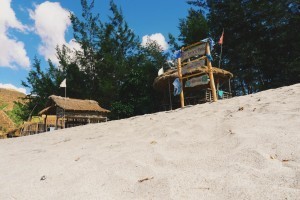 I’m not sure about the precise moment when time was seemingly put to a halt.
I’m not sure about the precise moment when time was seemingly put to a halt.
The sun was ablaze as my torso bobbed with the small boat that waded through the strong current. I was in partial slumber as my circadian rhythm insisted on catching up with its supposed state of snooze some hours before. It was a long bus ride taken in the wee hours of the night. The next thing I knew, my light nap was abruptly greeted with a jolt stronger than the one before it. The waves were still in a brawling state, the kind of brawl that proved scary enough to keep my eyes open. To some extent, I was delighted to have been woken up by such a frightful nudge as my eyes forcefully peeped through the lids albeit the blinding sun rays. There they were – perfect shades of green and blue, the ones that little kids would pick out for a page off a coloring book with an outlined illustration of a hill with perfectly moulded clouds atop it. Easy on the eyes, a vision I was particularly fond of.
We were greeted by Nagsasa, a cove shrouded with soaring aguho trees, a bunch of what looked to me like props to make the spot look like an actual campsite. We pretty much just tossed our bags on the rattan table and benches before once again settling our butts down, this time relieved that we were finally on concrete terrain. I pulled out my iPhone as habit would force me to, and as expected, the top portion did not have the usual little circles signifying how much signal it had. There was zero access to anywhere beyond the cove. And with that, I thought “hakuna matata.”
I almost forgot how it felt like to be at a standstill, as if there really was a way for time to stop. In a fast-paced jungle I live in called Manila, dreams of silent sanctuaries arise amid the chaos. And here I am, entrenching myself in a state I constantly long for, looking forward to savoring every perturbed second of this timeless place.
In this moment of nothingness, I lay on my front side with only a cloth separating myself from the fine hot sand beneath me. I close my eyes and dream of far-flung places that await me. I envision the countless possibilities in front of me and the faceless people I have yet to meet. I think of native houses in Kerala, hot chocolate by a window pane in Madrid, trains in Vancouver, street food in Chiang Mai, zebras in Namibia and a misplaced Peruvian hat in Machu Picchu. I imagine the 7000-plus other islands in the Philippines and try to fathom how I could possibly see each one of them. A whole world is ahead of me and thrill comes with fright as I imagine myself being immersed in different sorts of unfamiliarity and wonder.
I shift sides and face the striking sun head on and continue to bask in this dreamy state of sorts. I feel secluded and at peace, it almost seems unreal. I’m not sure when the clock’s hand will suddenly start to tick again but I keep myself ready for it for my succeeding journeys.
I am thankful for today when all else has seemingly stopped. So I can momentarily escape and be hopeful – hopeful of brighter days ahead, of constant learning and adventure, of happiness and love, and of all these hopes turning into reality.
As I get goosebumps from the immense scorching heat, I grab my journal and pour out my shambled thoughts in scribbles.
About the Author: Monica Copuyoc is a 24-year-old former Editor-in-Chief of an e-commerce company who quit her corporate job for the love of extensive traveling. She’s currently exploring different destinations in the Philippines and abroad while running Bookie, her co-owned travel company.
Thank you for reading and commenting. Please enter our next Travel Writing competition and tell your story.
The post Hakuna Matata in the Philippines appeared first on We Said Go Travel.
We Said Go Travel
We Said Go Travel is a global community of over sixteen hundred writers with articles from every continent.
Stories are shared with photos and video from a perspective of the transformative power of travel. We Said Go Travel has hosted live and online events as well as travel writing contests around the world. ...more
- Lisa Niver's profile
- 57 followers


